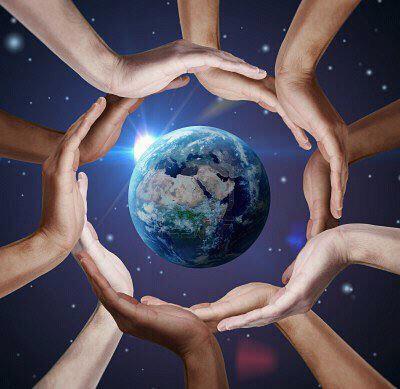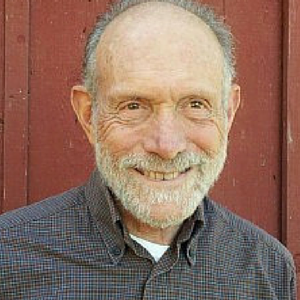
Unity in diversity (the term seems to have been coined by the philosopher Hegel) is a central aspect of the nonviolent worldview. In nature, unity in diversity is an essential organizing principle of Life. At first appearance, of course, it is a bit paradoxical: on the one hand the mystics of all ages, along with many others, have declared unequivocally that “all life is one.” At the same time, every living individual is unique. The essence of biological organisms is diversity. Probably no two ants, not to mention human beings, are precisely identical in their physical being or personality. Some pre-industrial peoples had a dread of identical twins that can probably be explained as a response to nature’s law of diversity.
In human life, as a practical and spiritual necessity, we have to cherish both the unity of our species and our distinctness as individuals. From the scientific point of view, both the human species as a whole and each human organism are definite realities, while group identities between those poles, notably race, are much less definable. Anthropologists have just about abandoned the concept of “race,” but no one denies the unity (on some level) of the human family and (on another) the personhood of the individual. Biologist Mary Clark, for example, in her revision of the reductionist theory of human needs that predominated in earlier centuries – “food, clothing, and shelter” – offered that for complete fulfillment we also need bonding (awareness of the unity among us) and autonomy (our uniqueness, our freedom to define ourselves) – a long with a third, meaning.
 How can we reconcile unity and diversity? By realizing that they occupy different “niches:” unity is a feature of the heart; diversity is a feature of the surface. For human beings that would mean the unity of spirit, or the soul (though the soul itself is sometimes thought of as individual in the West) and individuality of the body – with all differences of culture, community, etc. in between. Both unity and diversity are essential at their respective level. Attempting to impose uniformity on the surface (i.e. in Fascism) is as damaging as denying our essential unity underneath those differences. It will often be found that those who cannot accept diversity, who regard others as ‘other’ when they see differences of race, etc., do not have a concept of depth but see everything on the outer, physical surface.
How can we reconcile unity and diversity? By realizing that they occupy different “niches:” unity is a feature of the heart; diversity is a feature of the surface. For human beings that would mean the unity of spirit, or the soul (though the soul itself is sometimes thought of as individual in the West) and individuality of the body – with all differences of culture, community, etc. in between. Both unity and diversity are essential at their respective level. Attempting to impose uniformity on the surface (i.e. in Fascism) is as damaging as denying our essential unity underneath those differences. It will often be found that those who cannot accept diversity, who regard others as ‘other’ when they see differences of race, etc., do not have a concept of depth but see everything on the outer, physical surface.
How has this been applied in nonviolence?
One of Gandhi’s most useful concepts was heart unity: the idea that no amount of difference on the surface, including, as long as they were not abused, differences in authority, should cause us to feel alienation or separateness from anyone. We enjoy heart unity when we identify with others’ fulfillment and happiness regardless of differences of station, etc.
But unity in diversity actually goes a step further: not only does individual diversity not conflict with the underlying unity, it actually expresses or fulfills that unity. This has been beautifully expressed by MLK:
I can never be what I ought to be until you are what you ought to be; and you can never be what you ought to be until I am what I ought to be.
In this bold vision competition, and all the alienation and violence that flow from it, make no sense: not only is my happiness not achievable at the expense of yours, it depends on yours.
What a profound difference it would make in modern life to adopt this vision!









I am human, you are human.
I am life, you are life.
I need clean water, you need clean water.
I need fresh air to breathe, you need fresh air to breathe.
I need human intended nutrition, you need human intended nutrition.
We need this planet.
We are drops of this planet.
We are made from the same fabric of the same reality.
Unity in human unity.
In life, in truth, in love, in justice, in the wise nature of reality.
That is so beautiful. Thank you.